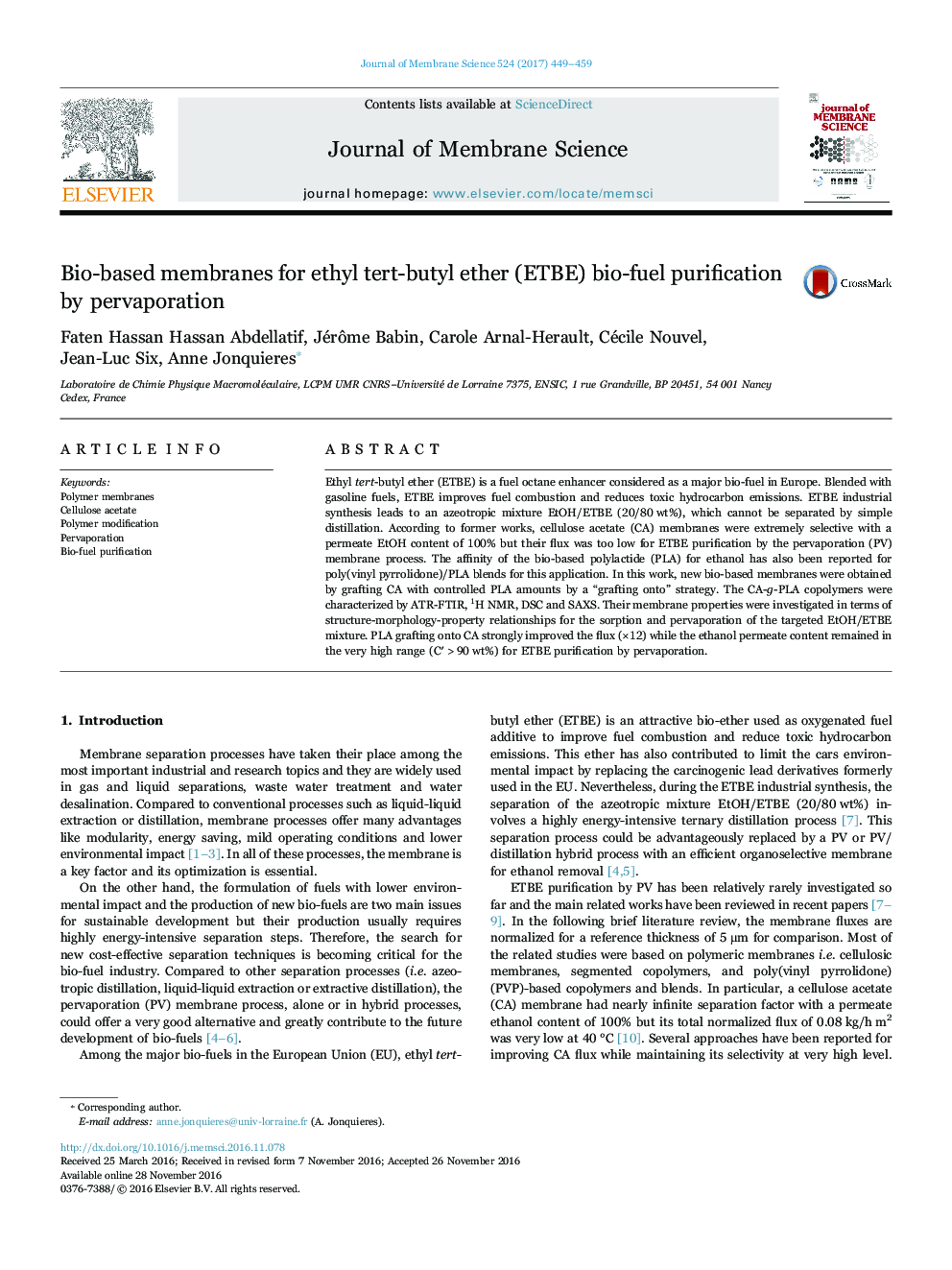| Article ID | Journal | Published Year | Pages | File Type |
|---|---|---|---|---|
| 4989233 | Journal of Membrane Science | 2017 | 11 Pages |
â¢Bio-based membranes were obtained by cellulose acetate grafting with polylactide.â¢The polylactide content in membrane was easily controlled between 0 and 40.5 wt%.â¢The membranes were tested for ETBE bio-fuel purification by pervaporation.â¢The flux strongly increased with PLA content while selectivity remained very high.
Ethyl tert-butyl ether (ETBE) is a fuel octane enhancer considered as a major bio-fuel in Europe. Blended with gasoline fuels, ETBE improves fuel combustion and reduces toxic hydrocarbon emissions. ETBE industrial synthesis leads to an azeotropic mixture EtOH/ETBE (20/80Â wt%), which cannot be separated by simple distillation. According to former works, cellulose acetate (CA) membranes were extremely selective with a permeate EtOH content of 100% but their flux was too low for ETBE purification by the pervaporation (PV) membrane process. The affinity of the bio-based polylactide (PLA) for ethanol has also been reported for poly(vinyl pyrrolidone)/PLA blends for this application. In this work, new bio-based membranes were obtained by grafting CA with controlled PLA amounts by a “grafting onto” strategy. The CA-g-PLA copolymers were characterized by ATR-FTIR, 1H NMR, DSC and SAXS. Their membrane properties were investigated in terms of structure-morphology-property relationships for the sorption and pervaporation of the targeted EtOH/ETBE mixture. PLA grafting onto CA strongly improved the flux (Ã12) while the ethanol permeate content remained in the very high range (Câ²>90Â wt%) for ETBE purification by pervaporation.
Graphical abstractDownload high-res image (266KB)Download full-size image
